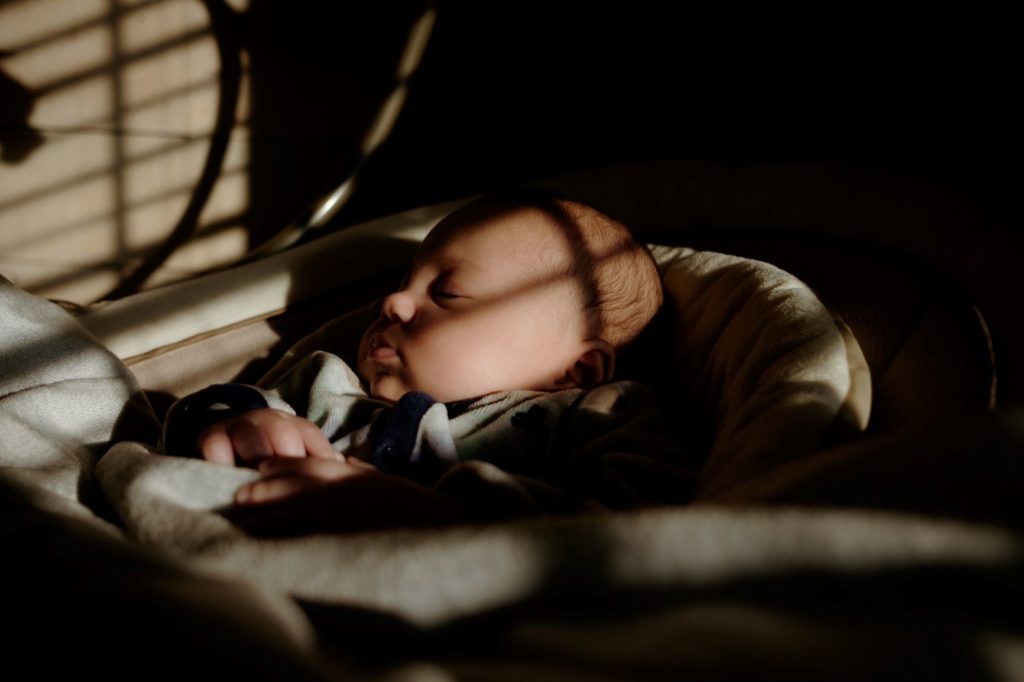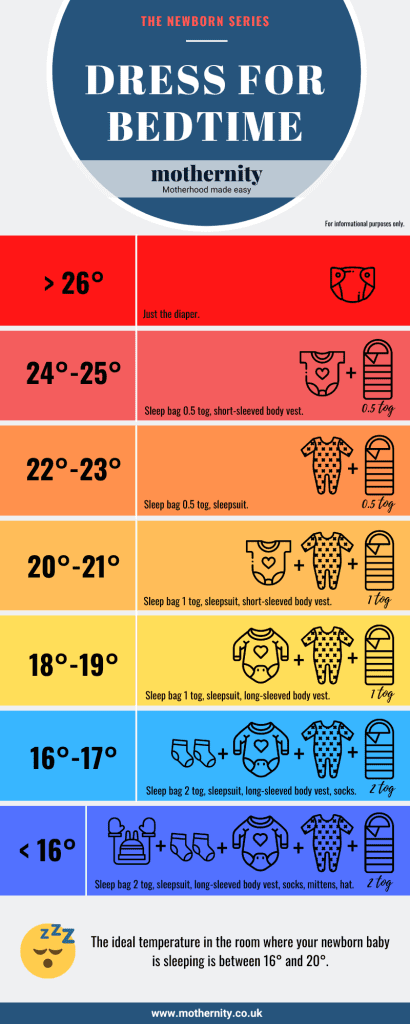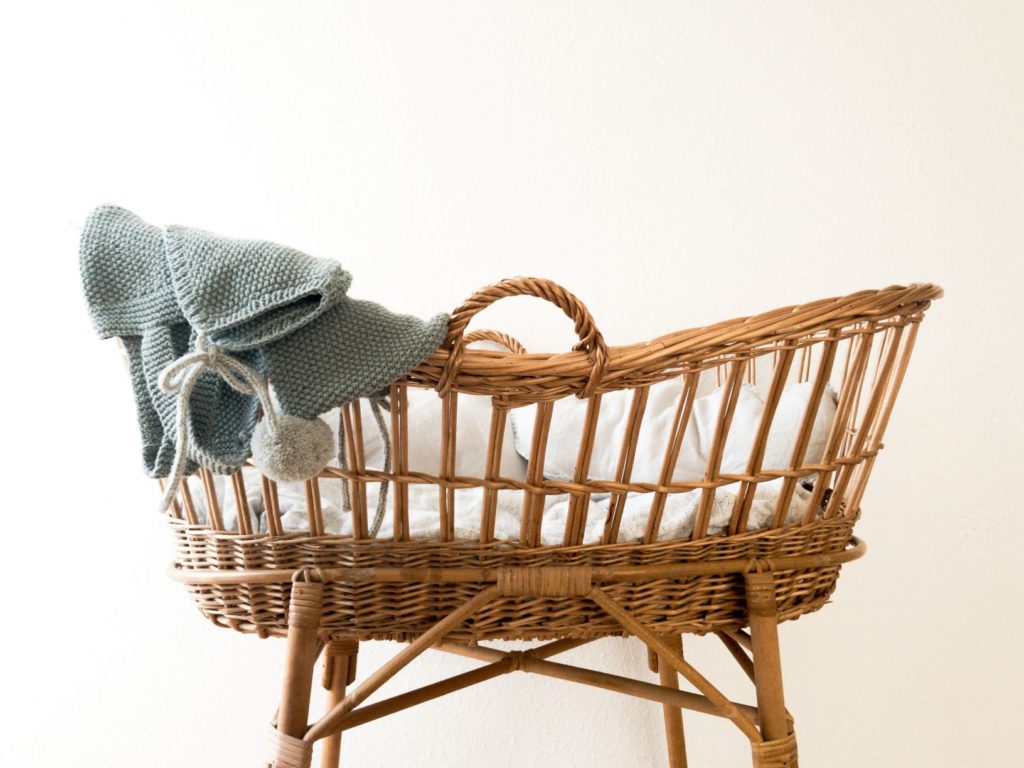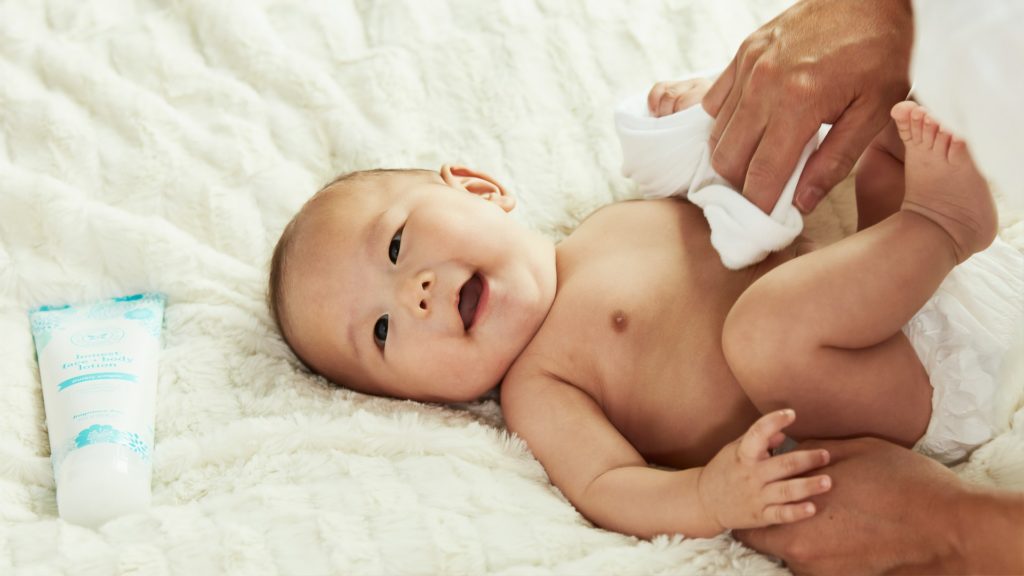
Preparing your baby for bedtime should be a straightforward task, and we’re here to offer guidance on getting it right from the start, ensuring both comfort and safety in the cosy world of sleep. Given that excessive warmth can elevate the risk of Sudden Infant Death Syndrome (SIDS), it’s crucial to carefully consider the layers of clothing your newborn wears and the temperature of their sleeping environment.
Versatility for changing temperatures
Ensuring that your baby’s sleeping environment maintains an appropriate temperature is easily achieved by investing in a thermometer. While any thermometer will suffice, the Gro Egg 2, with its colour-changing feature, is proving to be a favourite among parents.
- Weather Wisdom:
- Dress your baby according to the room temperature. In warmer weather, a simple onesie or lightweight sleep sack might be sufficient. In cooler weather, consider adding a layer, such as a footed sleeper or a wearable blanket.
- Layering with Love:
- Layering allows you to adjust your baby’s clothing as needed without disturbing their sleep. Use a combination of onesies, sleepers, and sleep sacks to create a comfortable and adaptable sleep environment.
Selecting suitable clothing for your baby
- Cotton Comfort:
- Opt for soft, breathable fabrics such as cotton for your baby’s sleepwear. Cotton allows air circulation, preventing overheating and keeping your baby comfortable throughout the night.
- Avoiding Allergens:
- If your baby has sensitive skin, consider choosing sleepwear labelled as hypoallergenic. Avoid outfits with irritating tags or seams that could potentially bother your baby’s delicate skin.
| Temperature | Layers |
|---|---|
| Over 26°C | Diaper alone is sufficient. |
| 24°C – 25°C | 0.5 tog sleep bag, short-sleeved bodysuit. |
| 22°C – 23°C | 0.5 tog sleep bag, sleepsuit. |
| 20°C – 21°C | 1 tog sleep bag, sleepsuit, short-sleeved bodysuit. |
| 18°C – 19°C | 1 tog sleep bag, sleepsuit, long-sleeved bodysuit. |
| 16°C – 17°C | 2 tog sleep bag, sleepsuit, long-sleeved bodysuit, socks. |
| Under 16°C | 2 tog sleep bag, sleepsuit, long-sleeved bodysuit, socks, mittens, hat. |
As each baby is unique, it’s important to observe your baby to ensure they’re neither too warm nor too cold. The American Academy of Pediatrics recommends keeping the room temperature between 68 and 72 degrees Fahrenheit (20 to 22 degrees Celsius) for optimal sleep conditions.
If you notice your baby’s perspiring or tummy feeling overly warm, removing a layer of clothing is advisable. Conversely, slight coolness in their hands or feet is normal and shouldn’t raise concerns.

For your convenience, we’ve prepared an infographic that you can save for free and keep handy. You can even print it and display it in your baby’s room as a helpful reminder. It’s important to note that while this serves as a useful guideline, discovering what suits your baby best and adapting accordingly is key.


